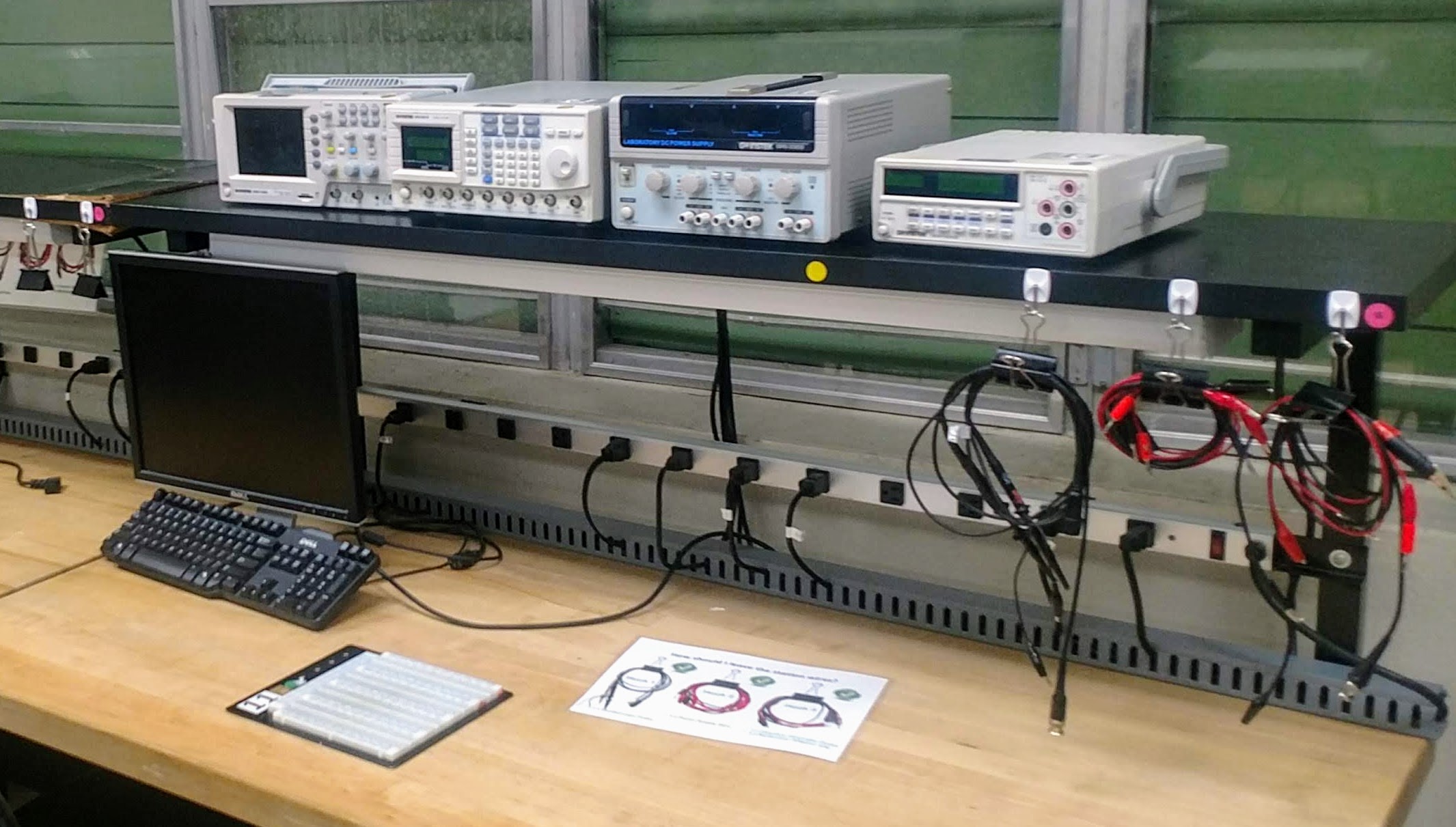
|
1. General Information: |
|
Alpha-numeric codification: INEL 4077 Course Title: Basic Electronics Laboratory Number of credits: 3 Instructor: Daniel Darío Campo Ossa E-mail: daniel.campo@upr.edu Contact Period: 3 hours of lecture per week Contact Period: Required to selected engineering programs Course coordinator`s name: Academic Affairs Committee |
|
2. Course Description: |
|
English: Description and use of basic equipment for electrical measurements in digital and analog circuits. |
|
Spanish: Descripción y uso de equipo básico para medidas eléctricas en circuitos analógicos y digitales. |
|
3. Pre/Co-requisites and other requirements: |
|
Corequisites INEL4076 |
|
4. Course Objectives: |
|
To developed basic skill in electrical circuits measurements. To allow non-electrical Engineer student to experiment with real electronics circuits. |
|
5. Minimum or Required Resources Available: |
|
All students expected to bring knowledge in basic theory of circuits: Ohms law, Kirchhoff laws, Theorems and RLC circuits. The student has to use electrical simulation tools to complement the lab work. |
|
6. Course time frame and thematic outline:
|
|
|||||||||||||||||||||||||||||||||
|
Outline |
Contact Hours |
|||||||||||||||||||||||||||||||||
|
Safety guidelines. Evaluation criteria. Laboratory rules. Format of laboratory report. Introduction to basic laboratory instruments. (lecture) |
3.0 |
|||||||||||||||||||||||||||||||||
|
Series resistive circuits and their The venin and Norton equivalent circuits. (experiment) |
3.0 |
|||||||||||||||||||||||||||||||||
|
Signal generator. Measurement of AC and DC signal characteristics using the VOM and the oscilloscope. (experiment) |
3.0 |
|||||||||||||||||||||||||||||||||
|
Capacitive reactance. Series RC circuits. Study of time constant and waveforms. (experiment) |
3.0 |
|||||||||||||||||||||||||||||||||
|
Inductive reactance. Series RL circuits. Study of time constant and waveforms. (experiment) |
3.0 |
|||||||||||||||||||||||||||||||||
|
RLC circuits. Study of damping ratio and waveforms. (experiment) |
3.0 |
|||||||||||||||||||||||||||||||||
|
Series resonance. Passive filters. (experiment) |
3.0 |
|||||||||||||||||||||||||||||||||
|
Diode characteristic curve. Zener diode. Circuits with diodes and resistors. (demonstration) |
3.0 |
|||||||||||||||||||||||||||||||||
|
Half wave and full wave rectifiers. Voltage regulators. (experiment) |
3.0 |
|||||||||||||||||||||||||||||||||
|
Bipolar Junction Transistor (BJT) characteristics. (demonstration) |
3.0 |
|||||||||||||||||||||||||||||||||
|
Basic amplifier circuits. (experiment) |
3.0 |
|||||||||||||||||||||||||||||||||
|
Logic circuit applications. (demonstration) |
3.0 |
|||||||||||||||||||||||||||||||||
|
Sequential logic circuit using flip-flops. (experiment) |
3.0 |
|||||||||||||||||||||||||||||||||
|
Tests ( Midterm and final exams) |
6.0 |
|||||||||||||||||||||||||||||||||
|
Total hours: (equivalent to contact period) |
|
|||||||||||||||||||||||||||||||||
|
7. Grading System |
45 |
|||||||||||||||||||||||||||||||||
|
8. Evaluation Strategies |
||||||||||||||||||||||||||||||||||
|
||||||||||||||||||||||||||||||||||
9. Bibliography: |
|
David Buchla, Experiments in Electronics Fundamentals, 7 Edition, Prentice Hall. |
- Professor: DANIEL D CAMPO OSSA